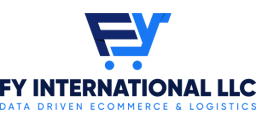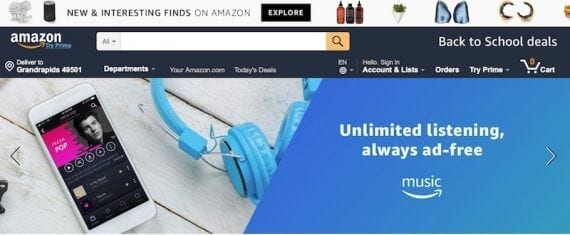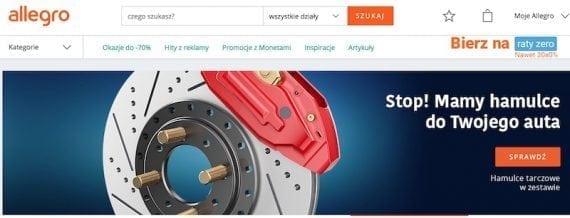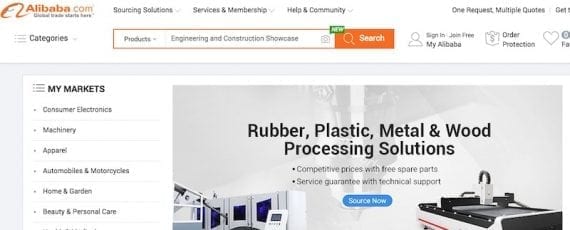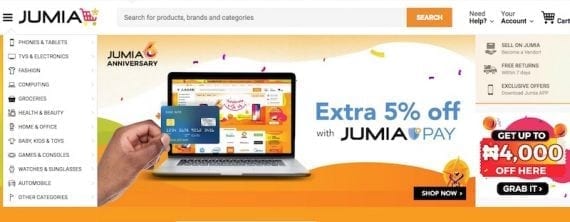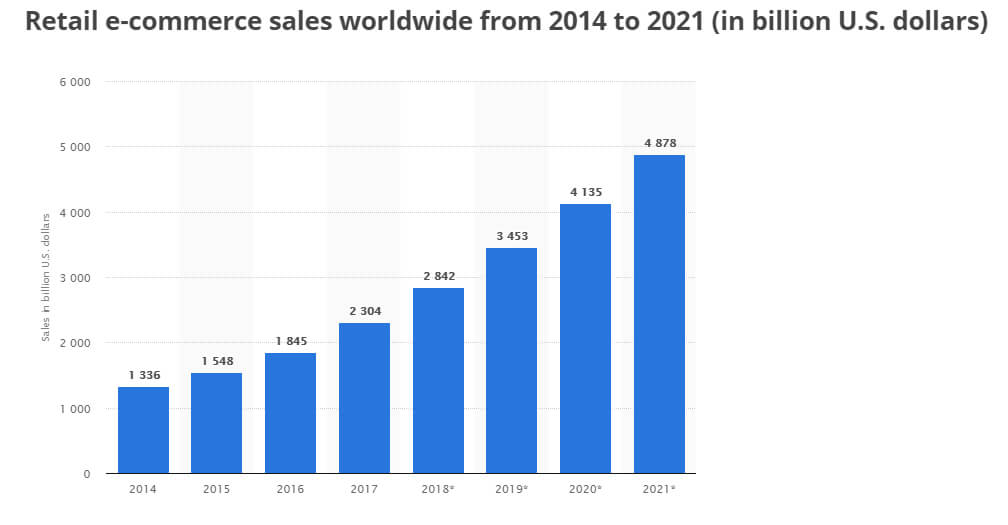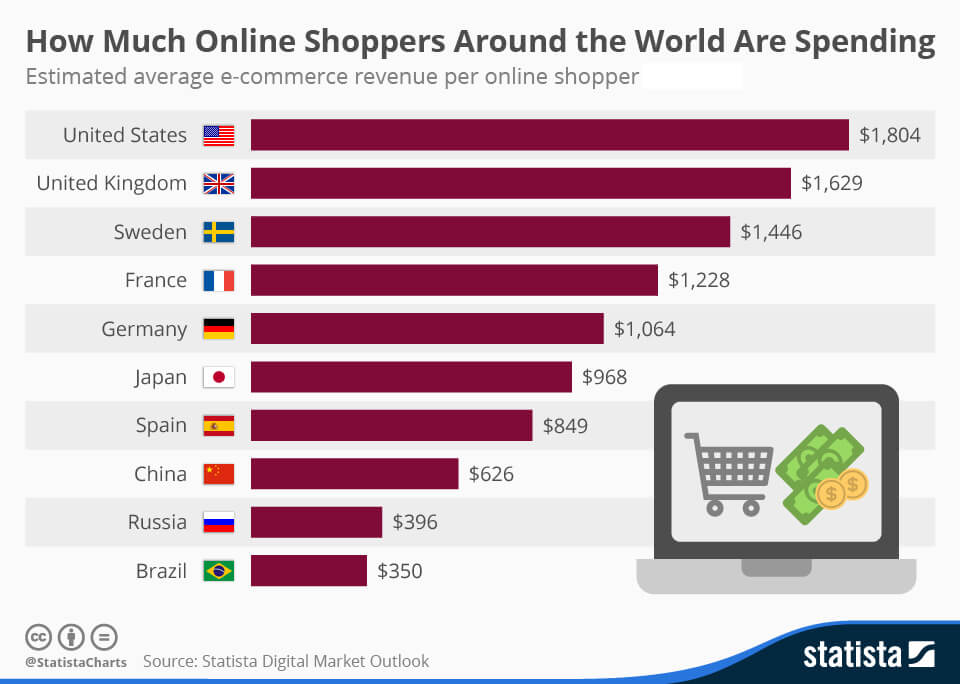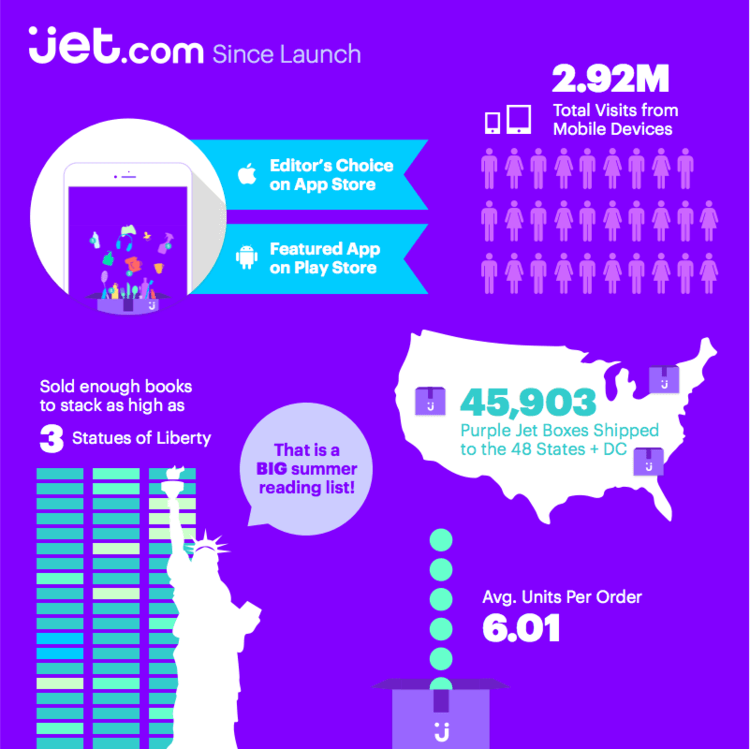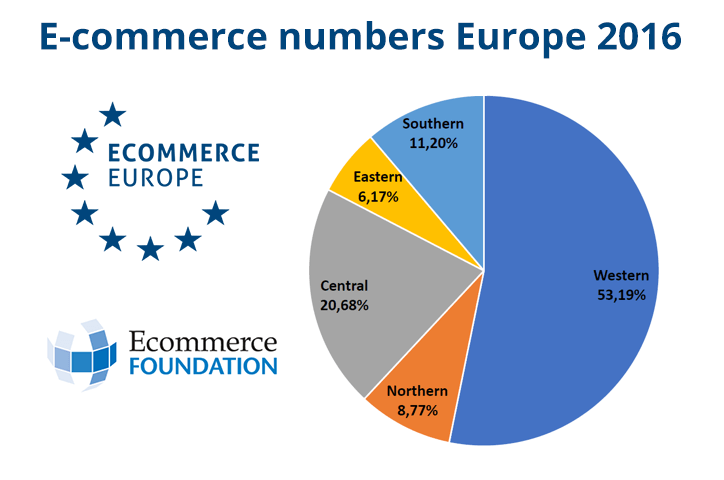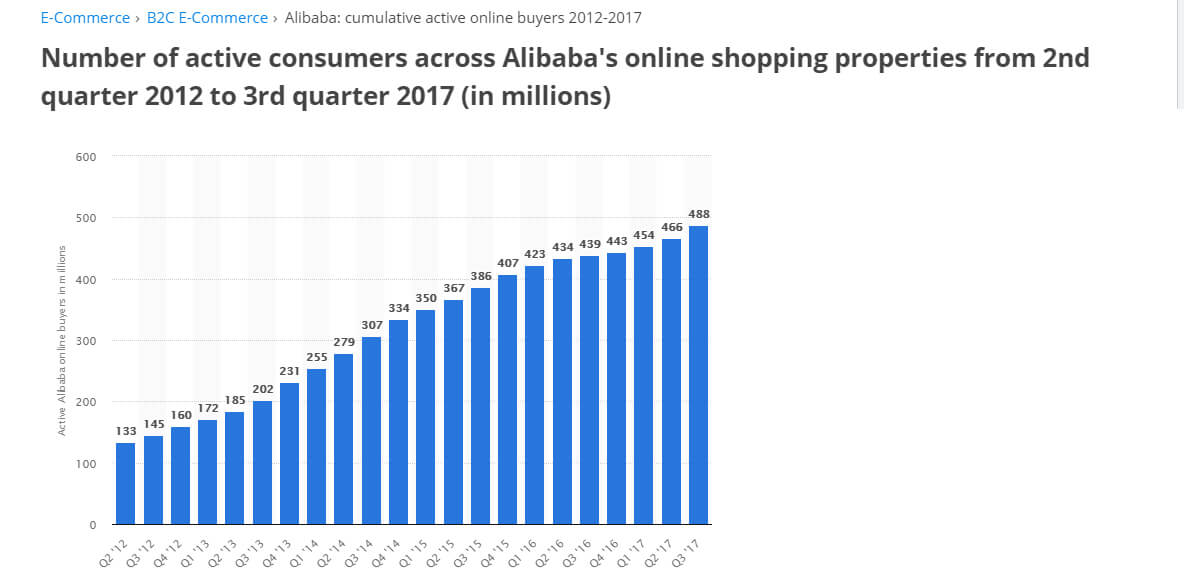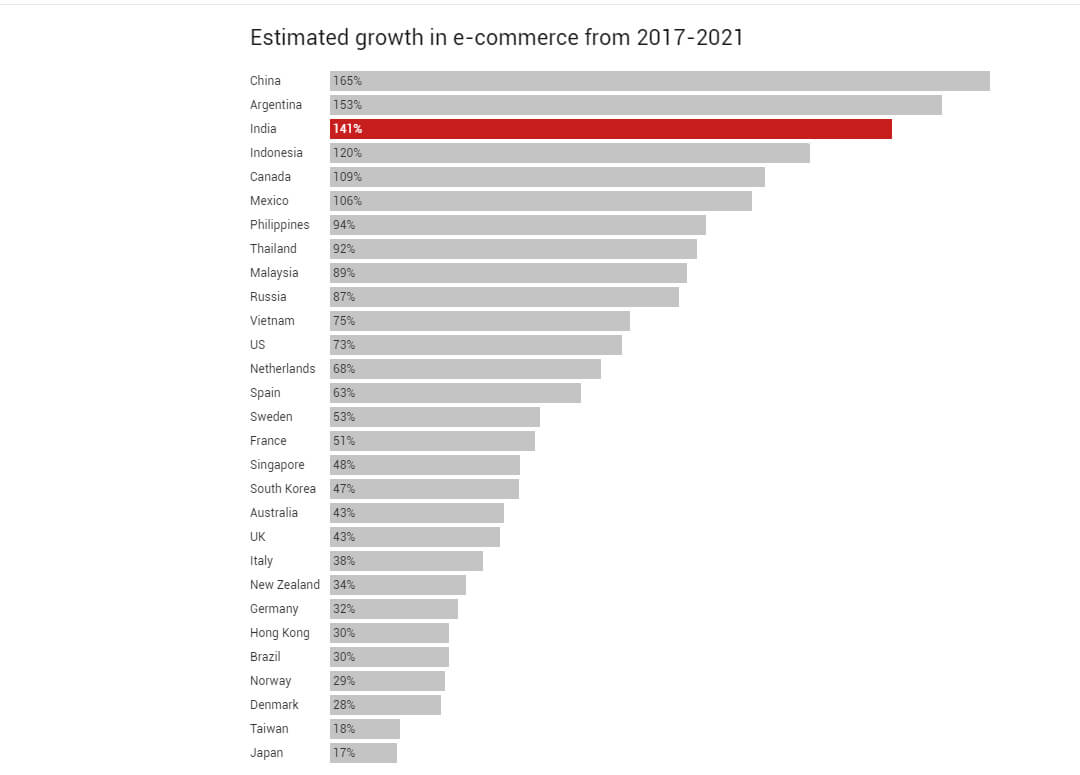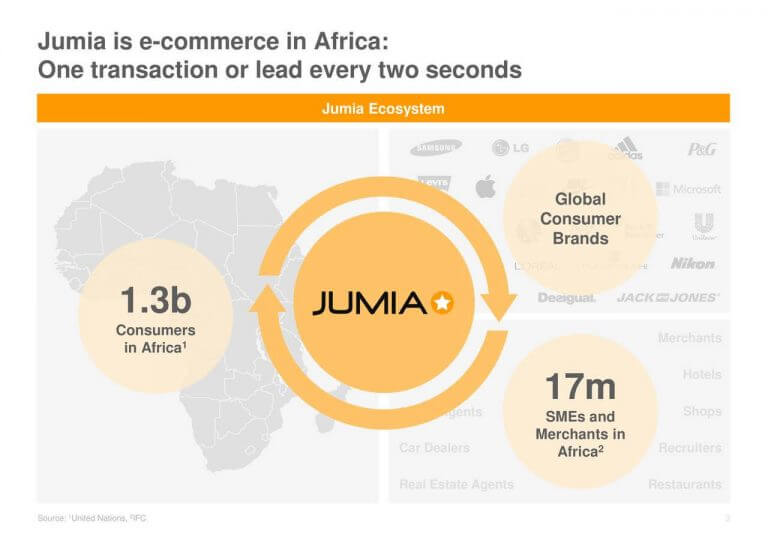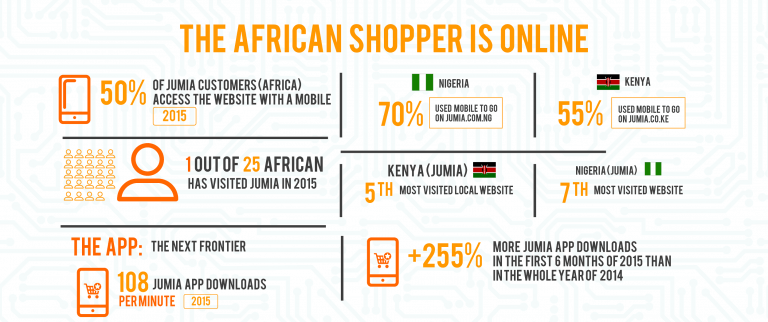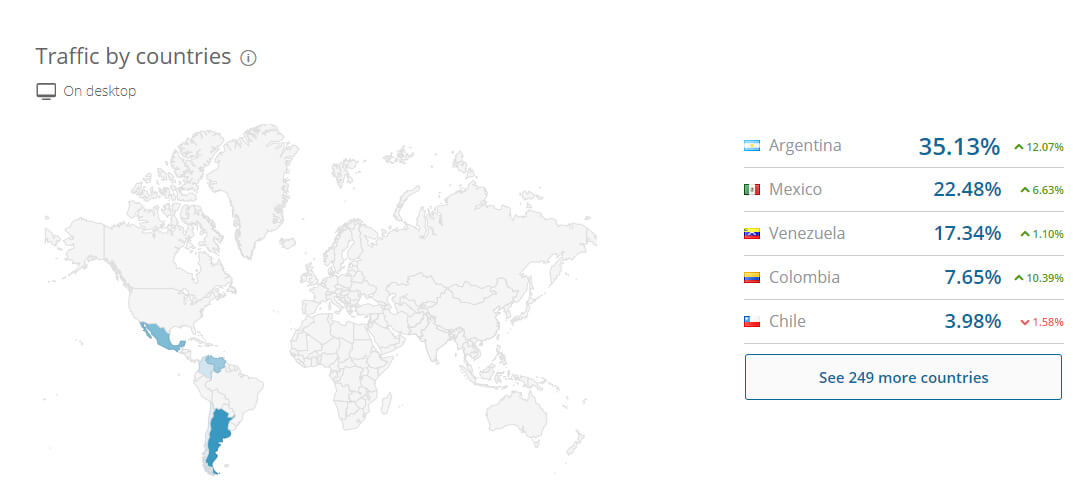58 Leading Online Marketplaces Worldwide
In “20 Leading Global B2B Exchanges,” I listed the leading global business-to-business sites to buy and sell products. In this post, I will list all major worldwide marketplaces — B2C and B2B. I have categorized the marketplaces by their home continent.
North America
Amazon is the largest ecommerce company in the world. It operates marketplaces in 14 countries: U.S., Australia, Brazil, Canada, China, France, Germany, India, Italy, Japan, Mexico, Netherlands, Spain, and the U.K. Amazon also runs separate marketplaces for businesses, called Amazon Business.
Bonanza is a seller-friendly marketplace with more than 10 million items. It has no listing fees and no monthly store fees. It sells in Canada, U.K., France, India, Germany, Mexico and Spain.
Cratejoy is a marketplace for selling subscription boxes. The boxes cater to consumer interests, such as healthcare and regional affinity. The site receives roughly 30,000 monthly transactions and more than 3 million monthly page views.
eBay has sites for 24 countries: U.S., Canada, Austria, Belgium, France, Germany, Ireland, Italy, Netherlands, Poland, Spain, Switzerland, U.K., Australia, China, Hong Kong, Indonesia, Japan, Malaysia, Philippines, Singapore, Taiwan, Thailand, and Vietnam.
Etsy is a global marketplace for creative, handmade products. Etsy focuses on helping the community of sellers become successful by making it easy and cheap to list products and start selling. The site serves roughly 30 million customers annually.
Jet is owned by Walmart, but it operates as an independent site. It offers sellers a rules engine to optimize their profitability. The site receives millions of daily visitors.
Newegg is a global electronics marketplace that has been in business for 17 years. It has tens of millions of customers and sells products in 50 countries.
Reverb is a marketplace for musicians to buy, sell, and learn about new, used, vintage and handmade music gear. It connects millions of people to musical products and inspiration. Roughly 80 million worldwide users visit the site annually.
Walmart started accepting online third-party sellers in 2016. Since then thousands have signed up. The site sells more than 1 million products; sellers can list items for free.
Wayfair is a marketplace focused on home décor and home furnishings. It lists more than 10 million products from over 10,000 suppliers.
Wish is a B2C marketplace with roughly 100 million annual visitors. Most of the items are low priced. Wish is reportedly the most downloaded shopping app globally.
Zibbet is a marketplace of independent artists, crafters, and vintage collectors. It is similar to Etsy. Roughly 50,000 sellers offer mostly handmade products on the site.
Europe
Allegro is the largest Polish marketplace, with more than 15 million customers and 70 million monthly product sales. All business is conducted in Polish.
Asos is a U.K-based marketplace that targets younger shoppers. It sells over 80,000 products and also has marketplaces in Australia, U.S., France, Germany, Spain, Russia, and Italy.
Cdiscount is a French marketplace with roughly 1 million unique daily visitors. It sells products across a broad range of categories with over €2 billion in annual sales.
Cel is a Romanian marketplace that sells over 50,000 products to roughly half a million customers. Retailers can sign up for free.
DaWanda is a U.K.-based marketplace for handmade goods. Over 320,000 designers sell their creations on the site. Products can also be customized.
Emag is the largest ecommerce site in Romania with thousands of daily customers. Retailers can sign up for free.
Flubit is a U.K.-based marketplace. It’s known for competitive pricing. It has over 60 million products and allows sellers to integrate their product catalogs.
Fnac is a French marketplace that sells a wide assortment of products to millions of customers. It also has physical stores in France and other countries and has integrated the omnichannel experience.
Fruugo is a U.K.-based marketplace in 32 countries. Sellers can register once to sell across these countries. The site supports 21 currencies and 17 languages.
Game is U.K. based and focuses on selling games, toys, and media products. The site has grown dramatically in the last few years. It processes thousands of orders every month.
Mobile.de is a German marketplace for selling vehicles to businesses and consumers. The site has customers from throughout Europe.
Okazii is an 18-year-old Romanian marketplace. It sells over 3,000 products daily and receives roughly 3 million monthly visitors.
OnBuy is a U.K.-based marketplace that attracts shoppers by offering affordable prices. It charges low fees to sellers.
Otto is a popular German marketplace. It launched in 1995. Nearly half of the residents in Germany have shopped on the site. Merchants can target the German market, but the product information needs to be localized.
PriceMinister is a French marketplace owned by Rakuten. It is reportedly the fifth most visited ecommerce site in France. Its seller program enables easy setup with no long-term contracts.
Real.de is a German marketplace that sells millions of products in categories such as electronics, toys, home and garden items, fashion, and furniture. Merchants can sell on Real.de or, alternatively, send shoppers to the merchants’ own sites.
Tesco is the online marketplace of the U.K. grocery giant Tesco. The company introduced the marketplace model a few years back. It has been very successful. Tesco carefully vets all merchants.
Zalando is a German marketplace that has expanded to multiple countries in Europe. It initially attempted to replicate Zappos (the U.S. footwear site) but has since evolved into one of the largest ecommerce portals in Europe. It has over 22 million customers and sells over 250,000 products representing 2,000 merchant brands.
South America
Americanas is a Brazilian online marketplace with roughly 500,000 products and 10 million customers. The site has over 20,000 marketplace sellers — B2C and B2B. Its parent company also own Submarino (below).
Casas Bahia is a Brazilian marketplace with over 20 million monthly visitors. It mostly sells furniture and home appliances. The company also has a large physical presence and runs 750 brick-and-mortar stores across Brazil.
Dafiti is a Latin American marketplace with millions of unique monthly visitors. It is newer than other marketplaces, but it has grown quickly. It offers tools to sellers for onboarding and general success.
Extra is a Brazilian marketplace that receives almost 30 million visitors per month. It works closely with other marketplaces. The site is owned by Cnova, which operates physical stores, providing Extra’s customers with an omnichannel experience.
Linio is an online marketplace with a presence in eight Latin American countries: Mexico, Panama, Venezuela, Colombia, Ecuador, Peru, Chile, and Argentina — representing roughly 300 million potential customers. Linio has over 3 million products and 10,000 sellers. It has roughly 50 million monthly visitors.
Mercado Libre is the largest marketplace in Latin America. It receives approximately 150 million monthly users and operates in Argentina, Bolivia, Brazil, Chile, Colombia, Costa Rica, Dominican Republic, Mexico, Ecuador, Guatemala, Honduras, Peru, Panama, Portugal, Uruguay, and Venezuela.
Submarino is a popular Brazilian marketplace that sells products across many categories. It is part of the company that owns Americanas. Merchants can benefit from a similar seller process on both sites.
Asia
Alibaba is the giant Chinese B2B marketplace. It has customers in 200 countries buying over 100 million products across 40 different categories.
AliExpress is an Alibaba-owned marketplace that targets buyers outside China. It has a global English site and supports 15 other languages: Russian, Portuguese, Spanish, French, German, Italian, Dutch, Turkish, Japanese, Korean, Thai, Vietnamese, Arabic, Hebrew, and Polish.
Flipkart is India’s largest marketplace with over 10 million customers buying from roughly 100,000 suppliers. Flipkart’s logistics network helps sellers deliver their products faster. It also provides funding to sellers. Walmart recently purchased a controlling interest in Flipkart.
GittiGidiyor is a Turkish marketplace owned by eBay with 60 million monthly visits and nearly 19 million registered users. It sells over 15 million products across 50 different categories. A large percentage of orders come from mobile users.
HipVan is a Singapore-based marketplace that sells home furnishings. Roughly 90,000 consumers have purchased from the site.
JD.com is a Chinese marketplace with over 300 million users. It also has a presence in Spain, Russia, and Indonesia. It is one of the largest marketplaces in the world with thousands of suppliers and its own logistics infrastructure.
Kaola is a Chinese marketplace that is part of the NetEase group, a China-based technology company. Kaola is a popular cross-border shopping platform in China. Sellers can set up a store on Kaola, or they can sell wholesale to Kaola, which then resells to consumers.
Lazada, a marketplace owned by Alibaba Group, operates in Indonesia, Malaysia, Philippines, Singapore, Thailand, and Vietnam. Lazada has thousands of merchants, generating roughly $1.5 billion in annual sales.
Qoo10 is a Singapore-based marketplace. It also operates in China, Indonesia, Malaysia, and Hong Kong. Anyone registered to buy on Qoo10 can also become a seller. Qoo10 is paid only after a sales transaction is completed.
Rakuten is a giant Japanese marketplace that sells over 18 million products. It has served over 20 million customers. It also has a presence in the U.S.
Shopee is a Southeast Asian marketplace operating in Singapore, Malaysia, Thailand, Taiwan, Indonesia, Vietnam, and the Philippines. It offers more than 180 million products. Merchants can easily register online or via the mobile app.
Snapdeal is an Indian marketplace with over 300,000 sellers and 35 million products. Sellers must be registered businesses in India.
Souq is a marketplace based in the Middle East and owned by Amazon. Millions of customers shop on the site each month.
Taobao is a Chinese marketplace owned by Alibaba. It has 600 million active users — the largest in the world — and over a billion products for sale. Selling on Taobao is easier for retailers that have a presence in China.
Tmall is a Chinese marketplace, also owned by Alibaba, that sells branded goods to customers in China and the surrounding countries. It, too, is one of the largest ecommerce marketplaces in the world with roughly 500 million users and many thousands of sellers.
VIP.com is a Chinese marketplace that focuses on flash sales. It has roughly 60 million active users and more than 20,000 brands. Retailers from outside China can sell on this marketplace.
Africa
Jumia is an African marketplace operating in 14 countries representing 1.2 billion potential customers. It has roughly 50,000 sellers. It is the largest marketplace in Africa, covering approximately 80 percent of the African internet population.
Kilimall is a marketplace that operates in Kenya, Nigeria, and Uganda. It has thousands of sellers targeting over 200 million consumers. The marketplace sells products only in English, making it easier for sellers to create product copy once and sell in all three countries.
Konga is the largest marketplace in Nigeria. It has thousands of sellers and roughly 50 million buyers. Sellers can store their products in Konga’s warehouse to enable faster delivery to customers, similar to the Fulfillment by Amazon model.
Australia
The Iconic is a marketplace operating in Australia and New Zealand. It launches 200 products daily and targets mostly younger females.
MyDeal is an Australian marketplace with 200,000 products across over 2,000 categories. Sellers must pass a product quality check before they can participate.
